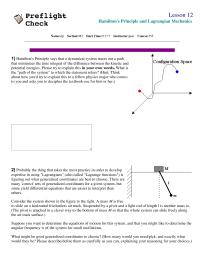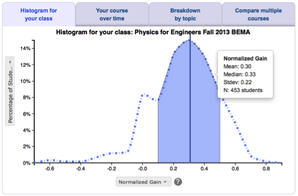
Developed by: G. Novak, A. Gavrin, E. Patterson, W. Christian








middle schoolhigh schoolintro collegeinter-mediateupper levelgrad school other

calc based

alg based

conceptual









Overview
What? Students answer questions online before class, promoting preparation for class and encouraging them to come to class with a "need to know." Instructors use the responses to fine tune their presentation and incorporate student quotes into the class.
Why? The JiTT system of pre-class preparation can result in a more efficient use of classroom time and "priming" of key concepts. When correctly delivered, JiTT motivates student interest and provides valuable feedback to teachers prior to formal instruction.
Why not? The JiTT method calls for instructor review of student responses immediately before class. This requires a consistent, dedicated commitment of time prior to each class using JiTT. Finding an appropriate system for collecting student responses can be a challenge.
Student skills developed
- Conceptual understanding
- Making real-world connections
- Using multiple representations
- Metacognition
Instructor effort required
- Medium
- High
Resources required
- Computers for students
Resources
Teaching Materials
You can download a pdf of the Just-in-Time Teaching book free from the JiTT curriculum page on PhysPort.
The JiTT website has a large free collection of JiTT activities for many topics in physics and for many other disciplines.
Research
This is the third highest level of research validation, corresponding to:
- at least 1 of the "based on" categories
- at least 1 of the "demonstrated to improve" categories
- at least 1 of the "studied using" categories
Research Validation Summary
Based on Research Into:
- theories of how students learn
- student ideas about specific topics
Demonstrated to Improve:
- conceptual understanding
- problem-solving skills
- lab skills
- beliefs and attitudes
- attendance
- retention of students
- success of underrepresented groups
- performance in subsequent classes
Studied using:
- cycle of research and redevelopment
- student interviews
- classroom observations
- analysis of written work
- research at multiple institutions
- research by multiple groups
- peer-reviewed publication
References
- S. Formica, J. Easley, and M. Spraker, Transforming common-sense beliefs into Newtonian thinking through Just-In-Time Teaching, Phys. Rev. ST Phys. Educ. Res. 6 (2), 020106 (2010).
- K. Marrs, R. Blake, and A. Gavrin, Web-Based Warm Up Exercises in Just in Time Teaching: Determining Students' Prior Knowledge and Misconceptions in Biology, Chemistry, and Physics, J. Coll. Sci. Teaching 33 (1), 42 (2003).
- J. Watkins and E. Mazur, Just-in-Time Teaching and Peer Instruction, in Just in Time Teaching: Across the Disciplines, Across the Academy (2009), p. 39.









